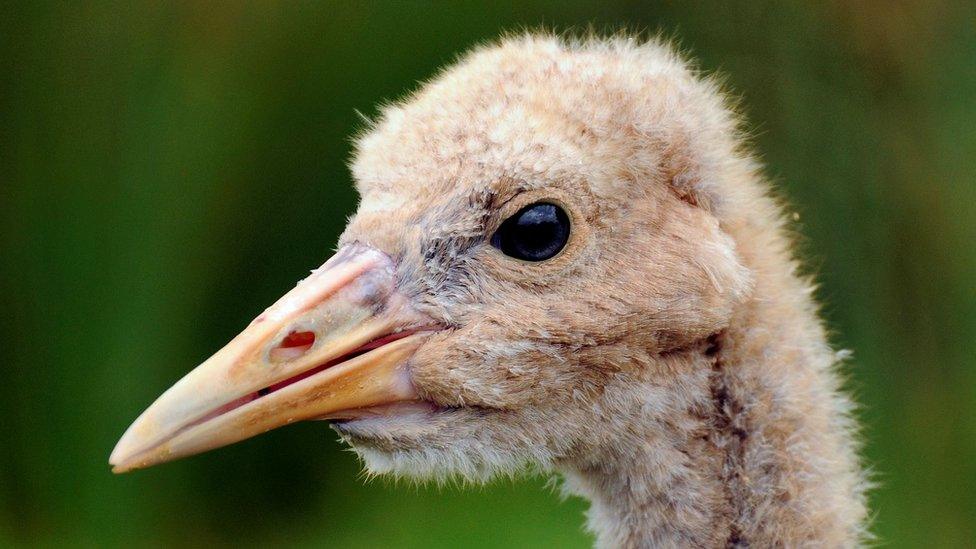Cranes: Survey reveals UK's tallest bird is making wetland comeback
- Published

At 4ft (1.2m) the common crane is the tallest bird in the UK
A breeding programme that began in the East to reverse the extinction of cranes has seen numbers bounce back.
The common crane became extinct in the UK in the 1500s but re-emerged in the Norfolk Broads in 1979.
A survey by the RSPB has revealed 71 pairs across the UK in 2022, with the population estimated at more than 200 birds.
Conservation scientist Andrew Stanbury said the government must now "choose to strengthen, not dismantle" laws protecting wetland habitats.
After returning to the Norfolk Broads in 1979, the RSPB said numbers of the birds were steadily increasing with populations found in South Yorkshire, the Fens and, with assistance of a crane introduction project, the Somerset Levels and Moors.
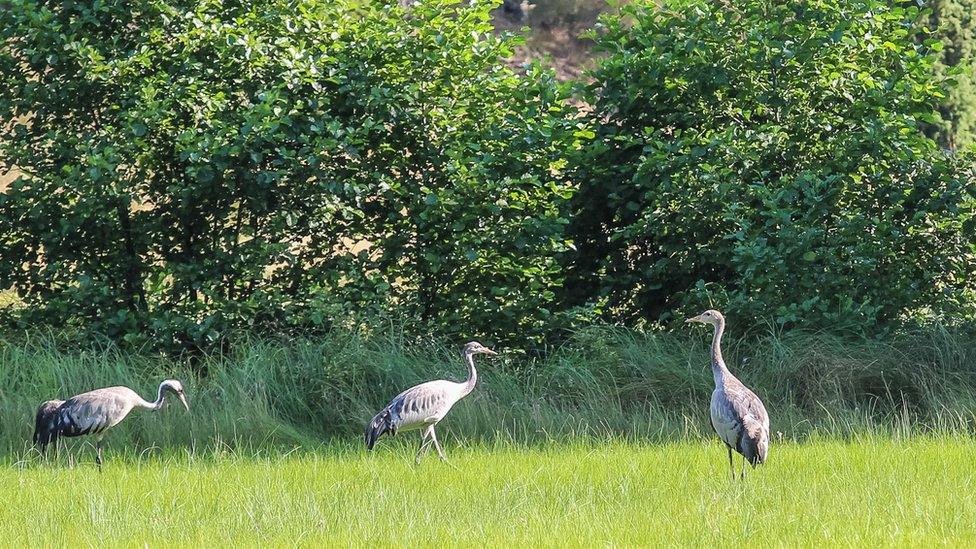
More than 200 cranes have been recorded in the UK after re-emerging from extinction here
In November two cranes became the first ever recorded pair to fledge young at the Snape Wetlands Nature Reserve on the Suffolk coast.
Adult cranes stand at about 1.2m (4ft) tall and are known for their complex "display" behaviour where they perform bows, pirouettes and bobs.
The "naturally secretive" birds can be seen at RSPB nature reserves including Lakenheath Fen, Nene Washes and Willow Tree Fen in Lincolnshire.
The birds are making a comeback thanks to restoration and protection of their wetland habitats.
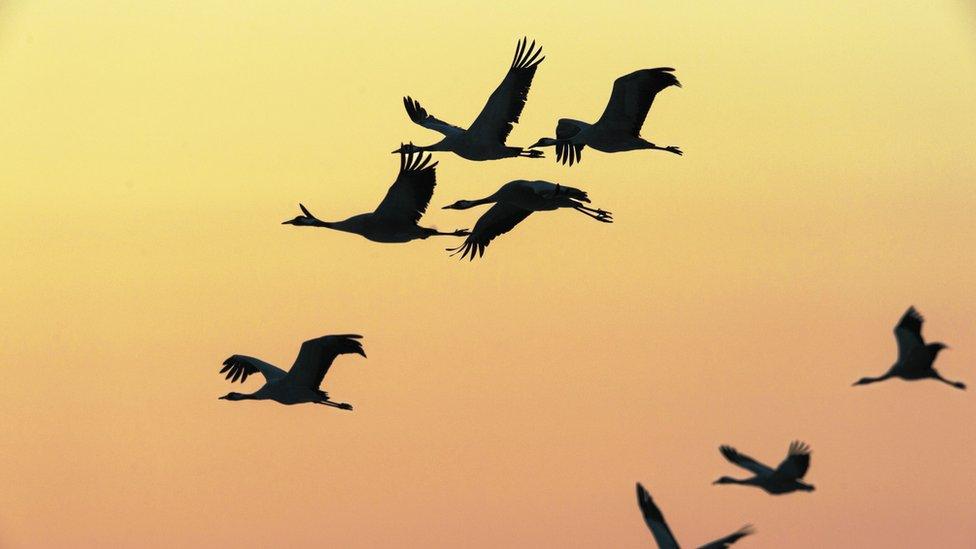
The RSPB has warned that changing UK legislation could see laws protecting wetland habitats changed
The RSPB said peatland restoration and wetland protection had significantly contributed to the recovery with more than 80% of the breeding population found on protected sites, and 21 pairs on RSPB nature reserves alone.
Damon Bridge, chair of the UK Crane Working Group, said: "Much of the UK's best wetland habitats are protected areas and provide sites for cranes to nest safely.
"Wetlands help lock carbon away, reducing green house gas emissions, and can also help to reduce flood risk to homes and communities as well as being wonderful areas for wildlife.
"We must continue to protect them."

Find BBC News: East of England on Facebook, external, Instagram, external and Twitter, external. If you have a story suggestion email eastofenglandnews@bbc.co.uk, external
Related topics
- Published31 January 2023
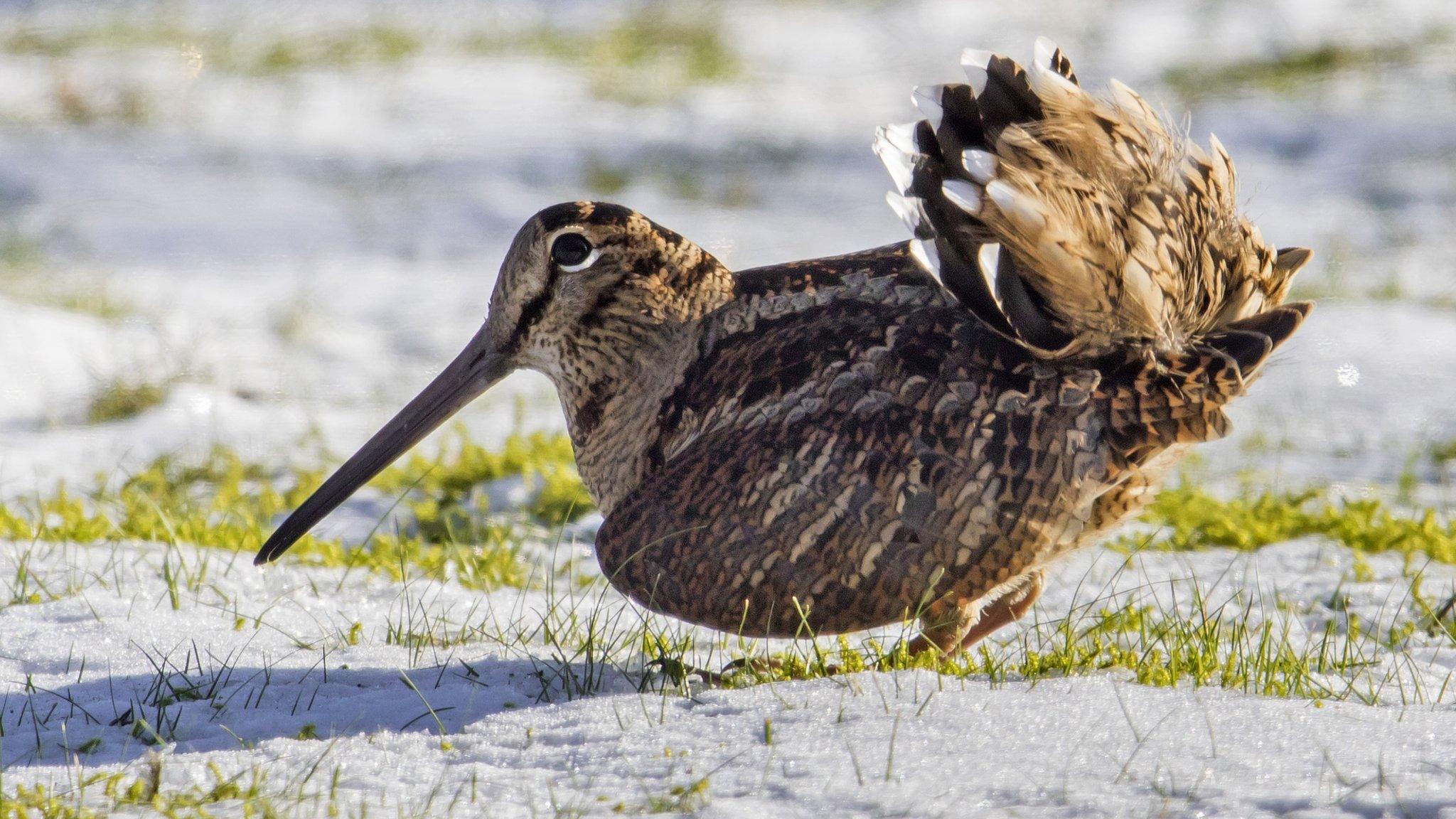
- Published29 November 2022
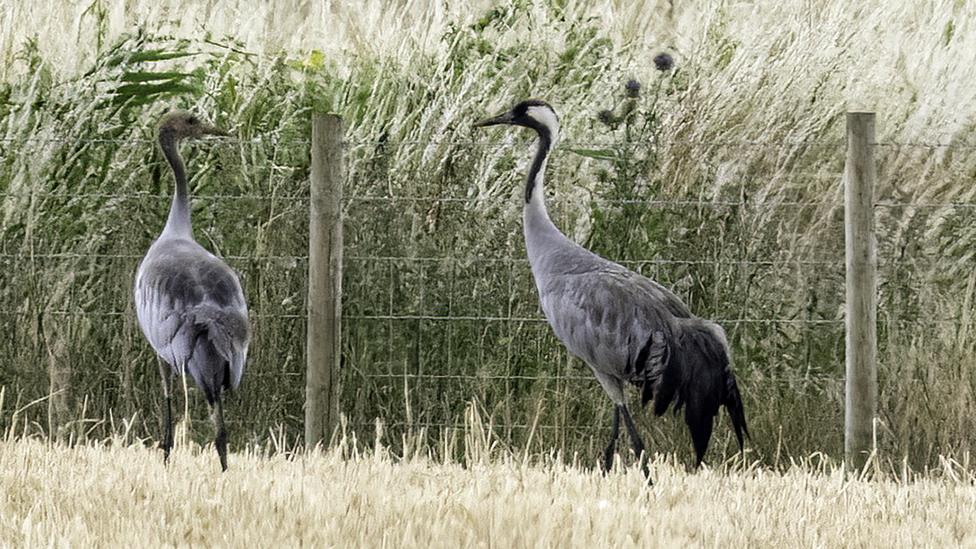
- Published25 March 2022
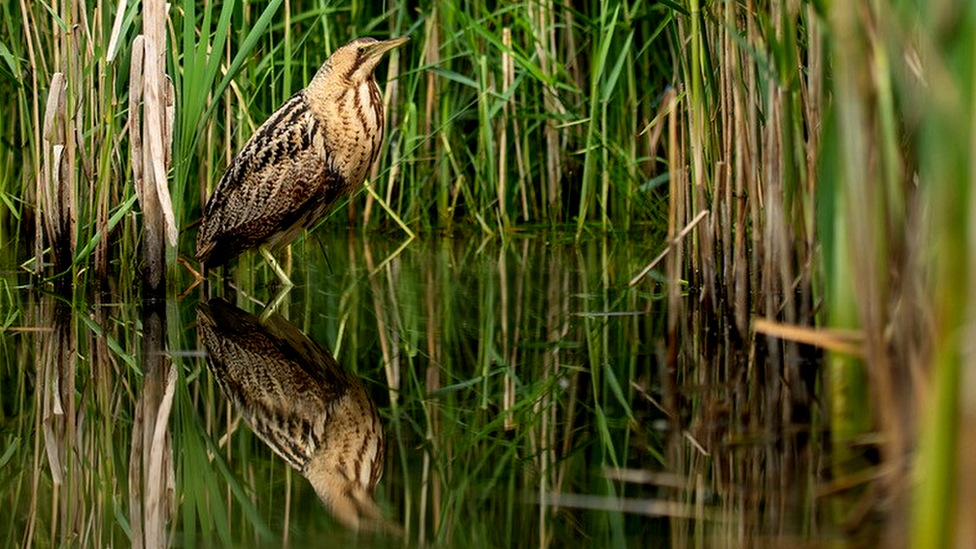
- Published2 February 2022
